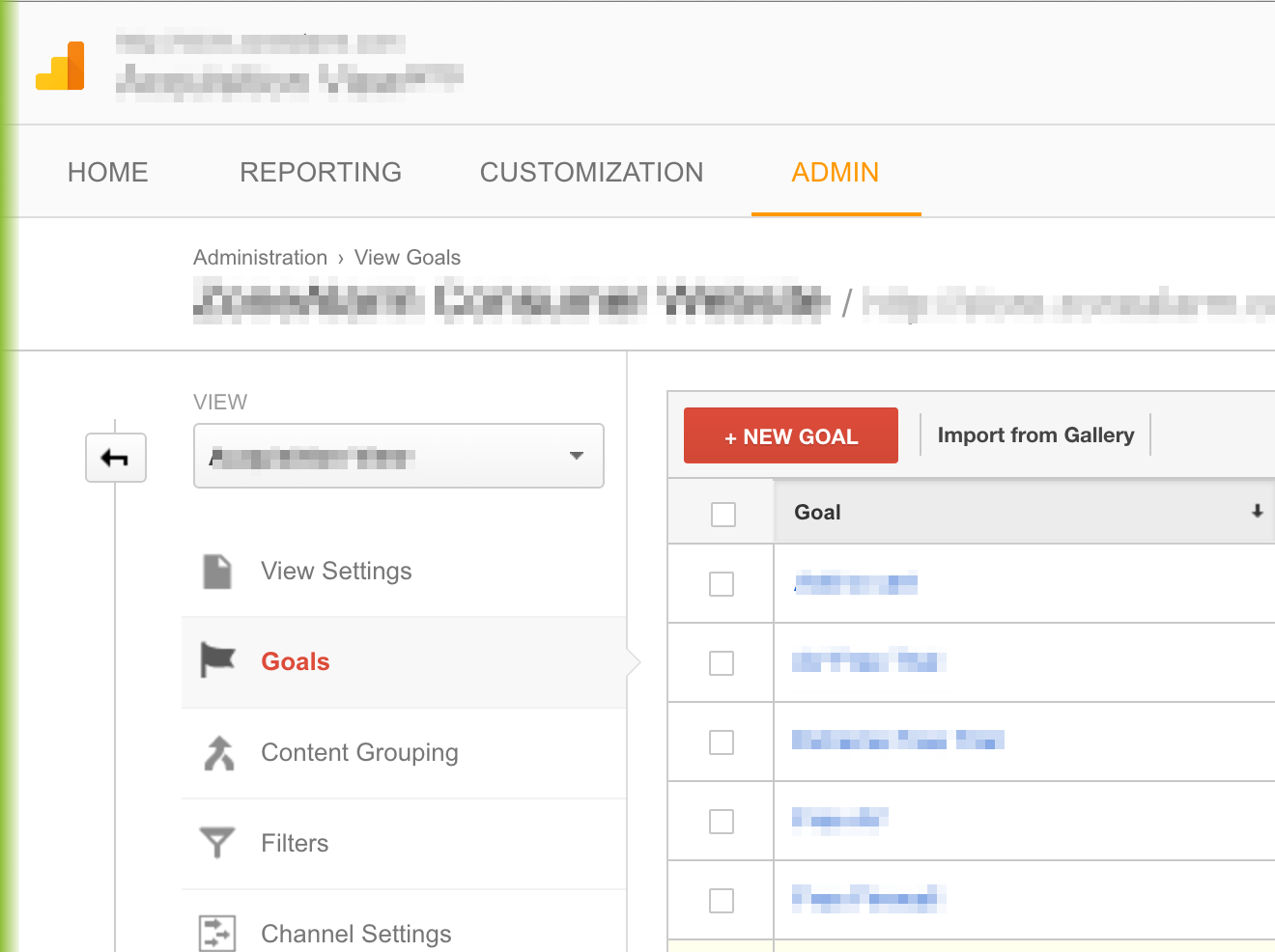Comprehensive List of What Data Is Google Analytics Goals Unable to Track
Comprehensive List of What Data Is Google Analytics Goals Unable to Track
Blog Article
Discover the Limitations of Google Analytics Goals: Introducing the Information Kind That Remain Untrackable
As organizations significantly rely upon data-driven decision-making, understanding the limitations of devices like Google Analytics ends up being paramount. While Google Analytics Goals deal important understandings into user communications, there exist data kinds that elude tracking, posing challenges to a thorough understanding of individual habits. These untrackable data kinds question regarding the accuracy and efficiency of the analytics information that companies greatly trust for their electronic methods. Curious to discover the concealed blind areas in your data evaluation procedure?
Insufficient Customer Trip Tracking
Insufficient user journey monitoring within Google Analytics can hinder the capacity to precisely analyze individual behavior. When the individual trip is not totally tracked, there are gaps in the data that stop a thorough understanding of how customers interact with a site. This absence of insight can result in missed out on possibilities for optimization and enhancements to the user experience.
One typical issue with incomplete customer trip tracking is the inability to see the complete path that users take previously finishing an objective or leaving the website. Without this information, it is challenging to identify where customers may be encountering challenges or friction points that avoid them from converting. Additionally, insufficient tracking can obscure the influence of particular advertising and marketing initiatives or web site changes on user behavior.
To address this limitation, it is essential to set up appropriate tracking systems within Google Analytics to record the entire individual journey. This might include establishing occasion tracking, goal funnels, or making use of devices like Google Tag Supervisor to ensure that no crucial communications go unrecorded. By acquiring a thorough view of the individual trip, website proprietors can make more informed choices to enhance customer interaction and drive conversions.
Attribution Challenges
Navigating via attribution obstacles in Google Analytics needs an extensive understanding of how various touchpoints contribute to the general conversion process. Attribution difficulties occur from the complexity of modern-day customer journeys, where customers engage with multiple networks before converting.
One typical acknowledgment obstacle is the trouble in associating conversions to the proper source, specifically in situations where customers connect with several channels prior to transforming. Furthermore, cross-device monitoring presents another attribution difficulty, as customers often switch over between devices throughout their journey, making it testing to track their interactions effortlessly.
Offline Conversions
Given the difficulties related to connecting conversions precisely in online channels, the measurement of offline conversions offers a considerable chance for marketers looking for a more detailed understanding of their clients' journey. Offline conversions refer to activities that consumers absorb the physical globe, such as making purchases in brick-and-mortar stores or over the phone, going to occasions, or involving with printed materials - what data is google analytics goals unable to track. These conversions are critical for businesses that run both online and offline, as they supply important understandings into the efficiency of advertising and marketing projects across various touchpoints
Tracking offline conversions generally posed a considerable difficulty for marketing experts, as it was challenging to connect these actions back to specific on-line communications properly. With developments in modern technology, such as the integration of CRM systems, one-of-a-kind identifiers, and coupon codes, companies can now bridge the gap this contact form in between online and offline information to obtain a more holistic sight of client actions. By successfully measuring offline conversions, marketing experts can optimize their techniques, allocate sources more effectively, and eventually improve the overall customer experience.
Cross-Device Tracking
Cross-device monitoring plays a crucial role in recognizing the interconnected nature of consumers' digital interactions throughout numerous gadgets. In today's omnichannel globe, where users perfectly switch over in between tablets, desktop computers, and mobile phones, tracking their habits across these devices is vital for online marketers to gain a detailed view of their consumer trip.

Additionally, privacy issues and laws such as GDPR and CCPA have additionally difficult cross-device monitoring. With individuals requiring even more control over their information and enhanced limitations on monitoring technologies, marketers should discover privacy-compliant and ingenious means to attach customer interactions across devices.
Dynamic Content Interaction
Recognizing customer engagement with vibrant material is critical in optimizing electronic advertising methods for improved audience interaction. Dynamic material describes internet site elements that alter based upon user actions, preferences, or various other elements, offering a tailored experience. Tracking user communications with dynamic web content presents difficulties for standard analytics devices like Google Analytics.
While Google Analytics can track standard communications like clicks and web page views, it may battle to capture even more nuanced involvements within dynamic material. what data is google analytics goals unable to track. Metrics such as time invested in details dynamic elements, hover activities, or communications within pop-ups are commonly not quickly quantifiable utilizing common tracking approaches. visit the site This restriction hinders online marketers' my review here capability to fully realize just how customers are involving with vibrant web content and tailor their methods appropriately

Conclusion
Finally, Google Analytics goals have limitations in tracking insufficient individual trips, connecting conversions accurately, capturing offline conversions, tracking cross-device interactions, and determining vibrant web content involvement. These constraints highlight the value of discovering additional tracking approaches and tools to get a much more comprehensive understanding of customer actions and conversions past what Google Analytics can provide.
While Google Analytics Goals offer beneficial insights right into individual communications, there exist data kinds that elude tracking, posturing difficulties to a detailed understanding of customer habits.Insufficient individual trip tracking within Google Analytics can impede the capacity to precisely examine customer actions. When the user trip is not totally tracked, there are voids in the information that protect against a detailed understanding of just how individuals connect with a web site.One usual concern with insufficient customer trip monitoring is the failure to see the full path that customers take previously completing a goal or leaving the website. By getting a detailed sight of the individual journey, website proprietors can make more educated decisions to boost customer interaction and drive conversions.
Report this page